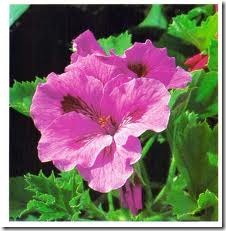Native to South Africa where they grow as perennials, geraniums (Pelargonium spp.) are often grown as summer annuals that are killed by hard frosts in fall. Ambitious gardeners dig up and bring their geranium plants inside to overwinter in a pot placed in front of a sunny window. Pruning back leggy stems before bringing plants inside saves space as well as allows plants to rejuvenate slowly over the winter months. Otherwise, once outdoors growing from spring to fall, occasional tip pruning and deadheading of old flowers encourages mounding, bushy plants that continually flower.
- Difficulty:
- Moderately Easy
Instructions
Things You’ll Need
- Hand pruners (secateurs)
- Cotton swabs
- Pinch stem tips on the geranium when three to four sets of leaves are present according to The Herb Society of America. Pinching is done with a sharp pruners or your fingertips, depending on your level of confidence and experience growing plants. Simply snip off the growing tip and allow dormant buds at leaf bases to grow and produce branches.
- Repeat stem-tip pinching in subsequent eight-week increments across the growing season. Not all branches warrant pinching, so focus on the leggiest stems to shape the geranium plant into a uniform mound. If the branch is producing lots of flowers at the scheduled pinching time, overpass it and pinch it next time, for example.
- Remove spent flowers after the flower petals shrivel or drop. This is called deadheading and results in plants continually producing more flowers. Do this every three to seven days continually throughout the growing season. Snip the flower stem at its base where it attached to the main branch with a pruners or a scissors. Alternatively, you can snap the flower stem with your hands but don’t use so much force or tearing motion to break the entire branch with leaves.
- Cut back leggy branches of geraniums into the partially wood-like branch bases of the plant. Do this only if you are bringing plants indoors to overwinter just before the anticipated first fall frost, or in mid-to-late spring outdoors when you want the entire plant to rejuvenate in summertime. The Herb Society of American strongly urges that you use a very sharp pruning blade so you cleanly cut through the woody stems, preventing any crushing or twisting tears in the pruning cut. Clean slice-cuts are less likely to be places for rot or disease infection, according to Swanland Nurseries.
- Dab the stem wounds with a clean cotton swab to remove bleeding sap from branches 5 minutes after the cut is made. This helps dry the wound more quickly, causing a protective callus to form to seal it off from air-borne pathogens like viruses, bacteria and fungal spores.
Tips & Warnings
-
If you are pruning many separate plants, consider spraying the cutting blades with rubbing alcohol after each cut. This sterilizes the blades and prevents accidental spreading of diseases to different branches. collection.
-
When conducting severe pruning to bring plants indoors for winter or to rejuvenate them outdoors in spring, avoid cutting into fully hard, woody branch bases as regrowth may not be quick to return, if at all. Focus on cutting into the slightly softer, partially green to light tan branch areas about 6 to 10 inches away from the woody trunk stem leading from the soil.


Deprecated: strpos(): Passing null to parameter #1 ($haystack) of type string is deprecated in /home/agriviek8Qv/agriviet.net/public_html/wp-includes/comment-template.php on line 2522